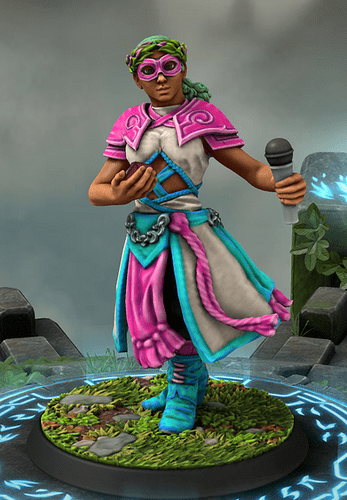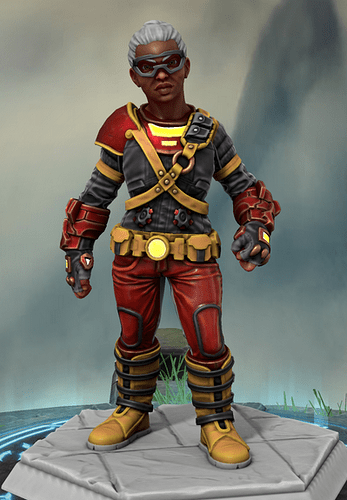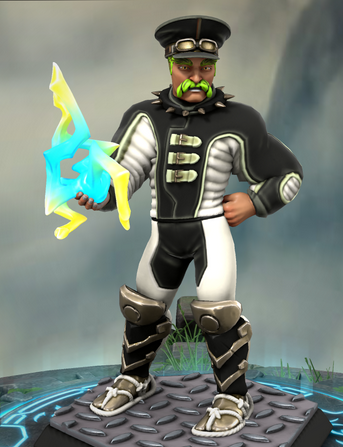Randomizers:
Approach: 8, 9, 3 [Options: Prideful, Mastermind, Specialized, Generalist, Tactician, Leech]
Archetype: 3, 3, 10 [Options: Bruiser, Overlord, Squad, Invader]
Upgrade: 12, 10, 8 [Options: Quality Upgrade, Calming Aura, Brainwashing Zone]
Mastery: 6, 3, 5 [Options: Conquest, Mad Science, Mercenary]
Leading Man
Real Name: Trent Hudon, First Appearance: Skybreaker Stories #99, August 1966
Approach: Mastermind, Archetype: Squad
Upgrade: Calming Aura, Mastery: Mercenary
Status Dice: No allied lieutenants: d6. 1-3 allied lieutenants: d8. 4+ allied lieutenants: d10. Health: 25+5H
Qualities: Acrobatics d10, Alertness d8, Technology d8, Fitness d8, Criminal Underworld d8, Star Quality d8
Powers: Gadgets d12, Agility d10, Awareness d8
Abilities:
- Spotlight On Me [A]: Attack using Acrobatics. Use your Max die. Defend all nearby allies with your Mid+Min dice until the start of your next turn.
- Follow the Script [A]: Boost yourself using Star Quality and use your Max die. Either make that bonus persistent and exclusive, or Boost yourself again using your Min+Mid dice.
- Improvise [R]: When Attacked, Boost yourself using the Attacker’s Max die.
- Only As Good As My Team (I): Increase damage you deal by the number of nearby non-minion allies.
Common Scene Elements:
- Live Set: An unsuspecting urban environment that Leading Man and his crew have filled with ‘exciting’ effects, unsuspecting civilians hired as ‘extras’, and confused law enforcement.
- Production Crew: Four d8 lieutenants. When taking their expertise action, they roll twice and take the better result. Director: Boost. Cameras: Defend. Effects: Attack. Publicity: Hinder.
- Gophers. D6 minions. As a reaction, a gopher can redirect an attack from a member of the Production Crew to themselves.
As the 1960s wore on, Skybreaker’s foes became increasingly flamboyant, and diverged into two broad pools - foes who were tangentially connected to his Celtic mythological heritage, and super-criminals who used absurd gimmicks to commit mundane crimes. Many of the latter were not highly successful, but one particularly enduring but low-tier villain was the Leading Man.
Trent Hudon was a struggling actor whose career had never really taken off. One day, while watching the police watch his film set pretend to rob a bank, he hit on a brilliant idea - why not use his acting skills to fake movie shoots, and then commit real robberies? He quickly assembled a team of fellow film professionals who were equally frustrated in their movie careers, and they became the Production Crew, career criminals who used their film-making experience to commit super-crimes. As the crew’s Leading Man, Hudon was flashy and flamboyant, having his Costumer disguise him and his team so that the police couldn’t find them, and using dangerous special effects, stunts, and decoys to win the idea.
At first, Hudon was fairly popular. The concept was ridiculous, and Skybreaker having to wade through a fake film set to catch a bank robber meant that his first struggle with the Production Crew sold well. As a result, a more stories about the Leading Man and his team came out across the late 1960s and early 1970s, facing off not only against Skybreaker but Flatfoot, Greenheart, and even one memorable jaunt against the Drifter. But at their root, the Production Crew had a problem - they had no bigger goal, no grand ideology, no proper personality clashes that could elevate them to be a renowned villain team. A few attempts were made to broaden Hudon’s range, or to attach a new member to his team who could hook them into larger stories, but those ended up falling flat; the goofy nature of the team was what had made them popular, and trying to make them more serious just made them less interesting.
The Production Crew never actually went away, but as the comics of the 1980s became grimmer and more extreme, they faded to a punchline; a minor gang of antagonists who would serve as an opener, or be used as a decoy by the real villain of the piece. Ultimately, the Leading Man and his team were folded into the Red Herring’s operations, and Trent Hudon was reduced to being a minor support to a villain who was doing his shtick better than him.
Behind the Scenes
I have made a slight modification to make Leading Man’s status die be based on his lieutenants, instead of fellow villains. I think it fits his style better and it’s a nominal shift; he needs his full Production Crew around to act at full strength, but can hold the d8 for a while.
Leading Man is another character who could have been a proper second-stringer if his stories had caught hold a little bit more. The basic concept is entertaining - more of a Mysterio than an Ambuscade, to use other comics as reference. But it’s not a surprise that he never managed to get a story that defined him, and with the Red Herring around doing the whole “pretend a situation is another situation” thing so definitionally as time goes on, it’s also not a surprise that he eventually makes an offer to the Production Crew and they join his team. Better fate than all the D-List villains who ended up dead!
Hudon and his team also don’t have extended lifespans, so presumably if a Production Crew appears post-timeskip, it’ll have new members – although immediately after saying that, I want a story somewhere of the original Production Crew, all in their mid-sixties, doing One Last Job for retirement…
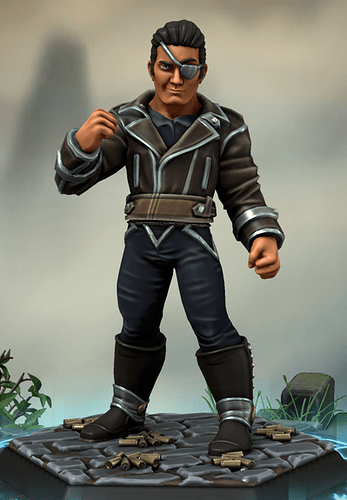
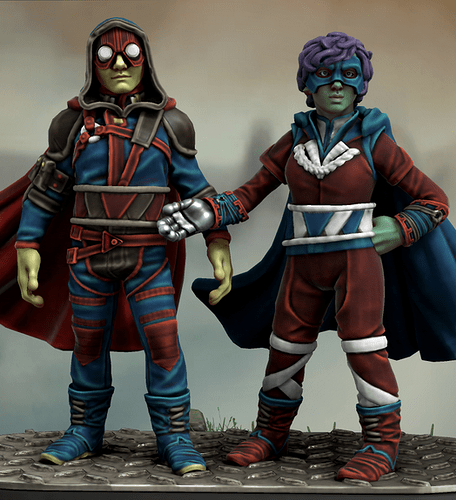

 Alien perspectives are so cool!
Alien perspectives are so cool!